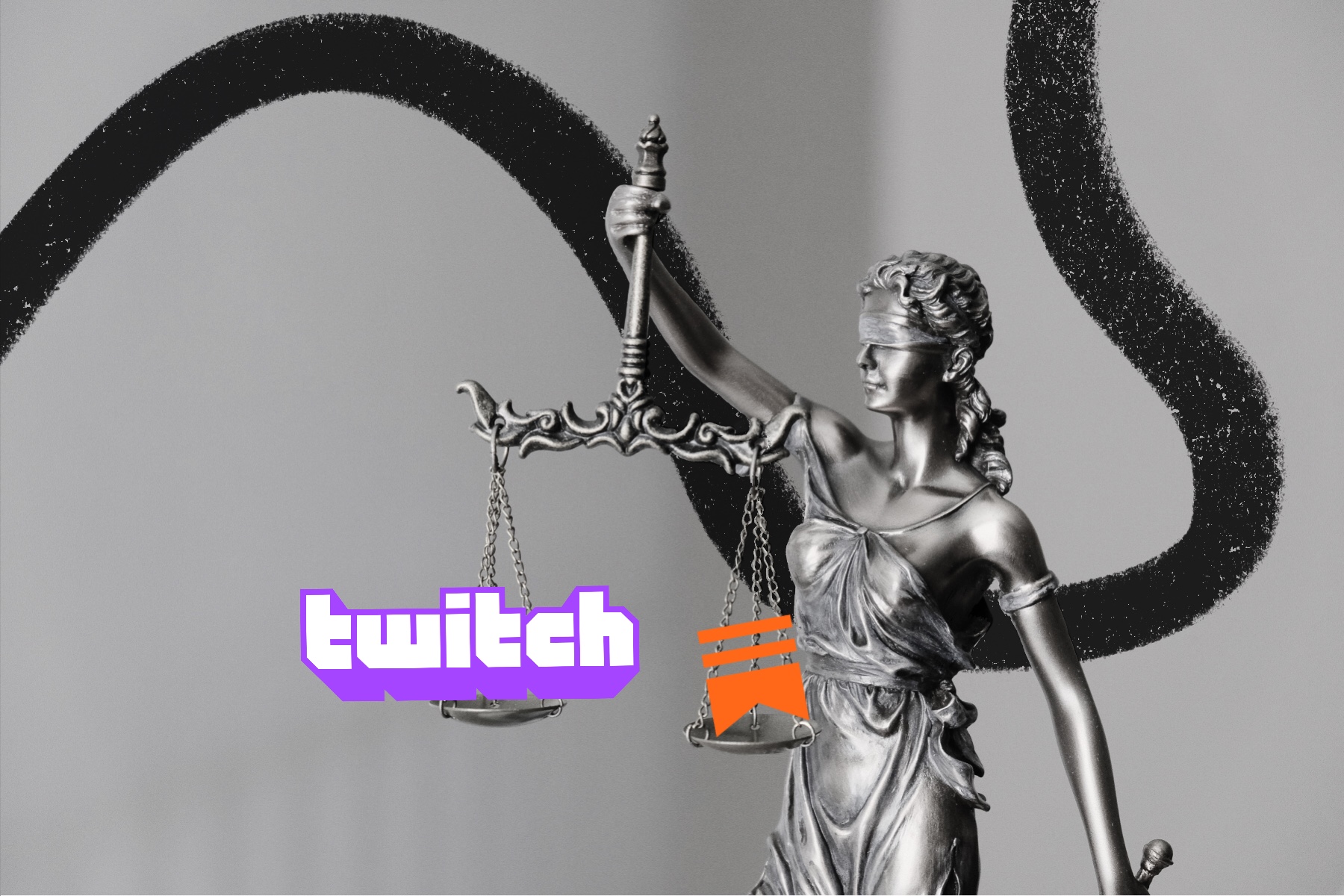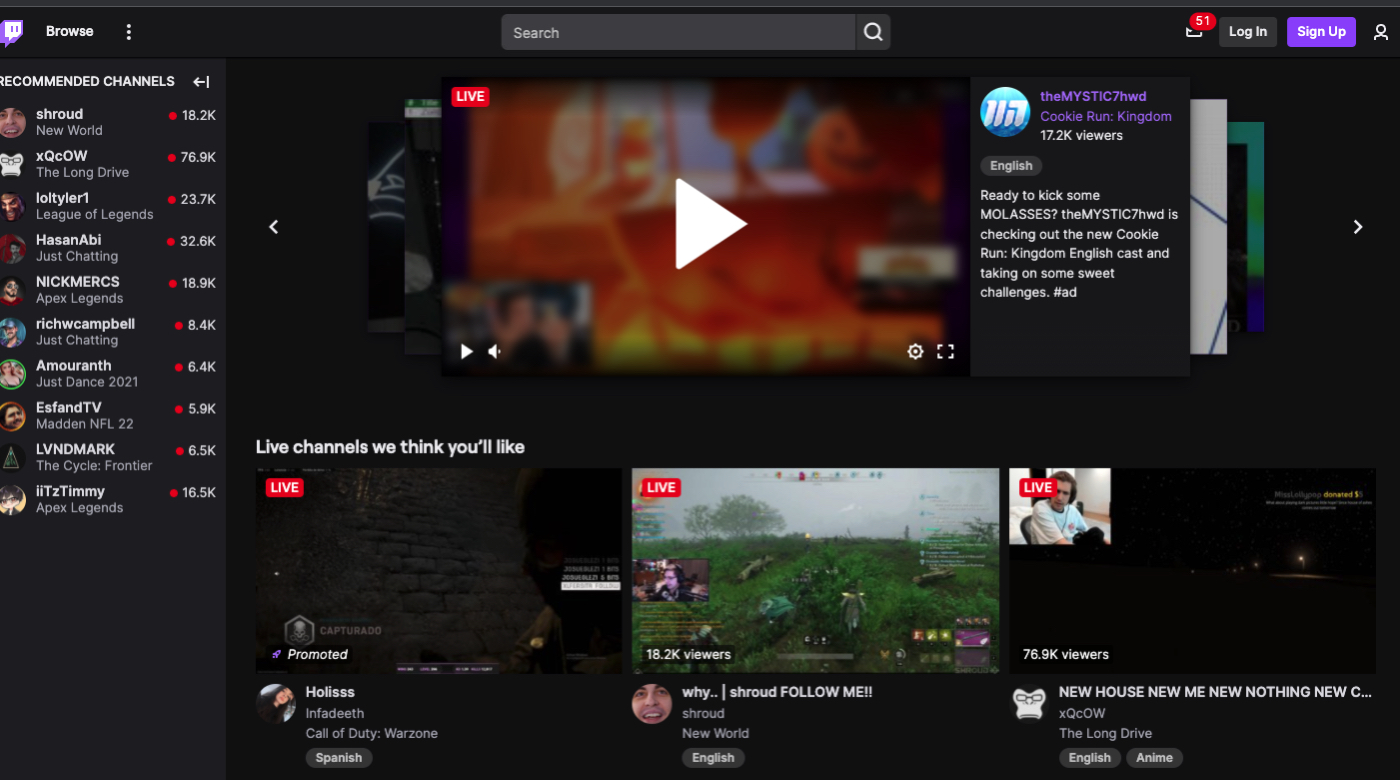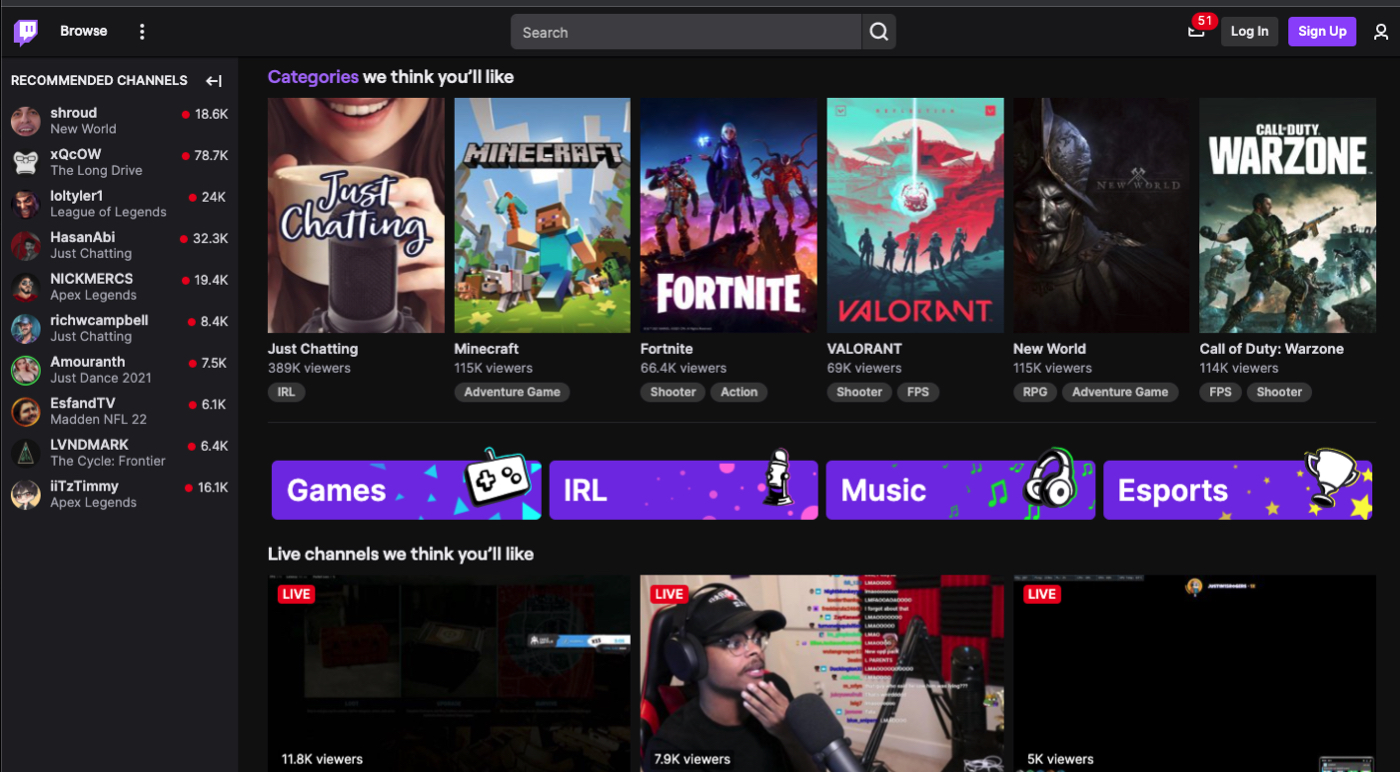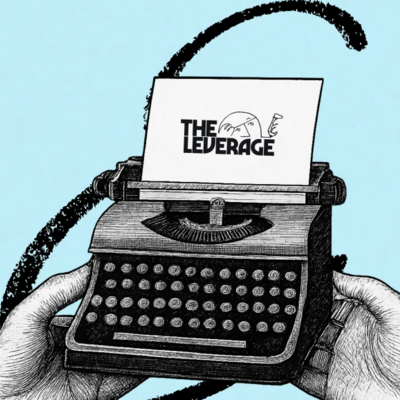
Sponsored By On Deck
Starting a company? You should consider On Deck’s new accelerator, ODX. ODX backs you with $125,000 and an All Access Pass to the On Deck network to hire talent, fundraise, and find new customers. I went through one of On Deck’s programs, and the experience had a really positive impact on my life: it expanded my network tremendously, and was a key stepping stone in my writing career. If you’re a founder looking for an accelerator I highly recommend you apply.
(Note: this isn’t part of the ad copy I sold, but I’m really interested in this as a strategist. ODX is On Deck going against Y Combinator—and competing with perhaps the most successful Silicon Valley institution ever is a bold move. There’s an article that should be written about this. Maybe I’ll write it, or maybe you should!)
Twitch is a live streaming platform focused on video games, owned by our bald, shiny-headed retail overlord Jeff Bezos, where streamers will talk with viewers and play video games. These guys, and they are almost universally guys, live out the wildest dream of 13-year-old Evan and play video games for a living.
Streamers can earn money on Twitch by advertisements, donations, or subscription memberships. Until recently, nobody knew how much top earners were bringing in, or how severe the drop-off is if you’re not in the top tier.
That all changed a couple weeks ago. Twitch was hacked, and one of the leaked data sets revealed the who was in the top 10,000 streamers, and how much money each of them made. The results were shocking at first glance.
- 50% of revenue was made by the top 1% of streamers
- 75% of accounts that are making money made less than 120 dollars this year
- 896,261 accounts made no money at all
- Only 0.06% received over the U.S. median household income of $67,521.
- A quarter of all revenue was earned by the top 1,000 accounts.
*oh lordy, they are playing Bernie Sanders’ music*
The numbers look even more shocking when you consider that this is just the top 10K. There are over 9M people who have streamed on Twitch.
But it gets worse. Even for those few creators who generated significant revenue, Twitch took a decent chunk of it:
- 50% of membership subscriptions
- 20-30% of ad revenue
- 30% of donations by viewers
So, in sum, Twitch pays basically no one and is selling a bald-faced lie that people can realistically make this into a career. As a greedy bastard and as a fellow content creator, I can sympathise with Twitch Streamers. It sucks that the power laws are so strong here.
However, I think Twitch is actually offering those streamers a great deal.
So for today’s piece, I would like to talk about how we can determine if an entertainer/creator/pick-your-buzzword-for-professional-who-makes-stuff-to-be-consumed is getting taken advantage of. Are Twitch streamers overpaid? What about Substackers? YouTubers? TikTokers?
To start, we will go deeper into the Twitch example to examine power laws. Power laws are an extremely important component by which to examine whether a platform’s offer is a good one or not, because so much of the internet is dictated by power laws. There has been a hope that the creator economy would be more immune from that dynamic (unfortunately, that has turned out to be not true). From there, we will discuss a formula I created by which you can evaluate whether you are getting taken advantage of by tech platforms.
Power Law and Power Eyeballs
Compensation for all creators is a question of simple arithmetic.
How Many People Can You Get To Pay Attention x The Revenue You Can Get From Each Additional Unit of Attention = The Money You’ll Make
However, despite the simplicity of the formula, it is actually quite difficult to get a positive number out of it. People are constantly punched in the face with stuff demanding attention, so trying to grab attention from other forms of distraction is tough.
Twitch is a great example of this. The homepage is an overwhelming experience. When you open it up, your retinas are seared with dozens of links, videos, images, and suggestions.
And this is without scrolling! If that first batch of suggestions didn’t catch your eye, then simply scroll down and you’ll be freshly assaulted with logos of popular video games and suggested categories.
From there, you essentially can click something or start browsing using the search bar.
As human beings, there is only so much choice we can stand. Presented with a litany of choices, we get overwhelmed and just fall back on familiar favorites.
I call this the “dinner with your partner” dilemna. We have all had the experience—you are grabbing a quick dinner and need to reach consensus on where to go. “I don’t care, we can go wherever.” “Great! Thai?” “No.” “Mexican? No, too cheesy.” “Burgers?” “No, too heavy.” “Salads?” “No, too healthy.” This goes on until you eventually give up and say the place you know they were waiting for all along. “Sweetgreens?” “Well only if you want to.” Note: This dilemma is a useful tool to determine whether you want to be with someone. If your partner does this to you and you don’t contemplate murder you are doing ok.
The Twitch homepage is essentially Dinner Dilemma theory made manifest. In contrast with picking food, there is no geographical arbitrage for the internet. That is super important so allow me to say it again in a slightly less big-headed way, the internet has no concept of geographical distance, so you can choose from virtually unlimited options. Allow me to say it again one more time for the people in the back, your eyeballs can only look at like 20 things, there are 9M Twitch Creators.
When you remove geographical restrictions and open things up to the scale of the internet, the idea of “locations” shifts from a place on a map to a community of people interested in a topic. For example, there are only so many video games that are popular to stream. Whether it is Fortnite or Call of Duty, there is a brand power that is important here. When someone is just getting started into watching video games, they probably care less about which streamer and more about which game. Sometimes people might come in for other reasons (e.g. it didn’t matter what game AOC was playing when she streamed on Twitch, that wasn’t why people were watching) and they might stick around more because of the creators than the games, but generally this is how people get started. Note: This is exactly what has happened with me and Twitch. Love me some Apex Legends streamers.
An internet platform ultimately doesn’t care which creator someone watches, all they care about is making sure that end users stick around long enough to make money off them. When starting from scratch, the default will always be just to serve up what is most popular. And then because we are creatures of habit, it is likely that a lot of people will just stick with the first people that they liked. Sweetgreen/Ninja again? I guess so—can’t think of anything better!
Over a long enough time frame, this steady state will accumulate more and more power into the most popular creator’s hands. It’s a self-reinforcing positive feedback loop where the most-watched streamers get shown to the most new users, simply because they are the most-watched streamers. Power Law rear thine ugly head.
The homepage design would suggest that audiences are going to Twitch, discovering creators, and then sticking with them out of habit. By acting as an aggregator of demand and concentrating the demand in a <1% of streamers hands, Twitch argues that its take rate is justified. They give them the audience, what more could they want? Frankly, these arguments sound convincing but we need something more rigorous.
With that in mind, what are you supposed to do? How can accurately evaluate whether a platform is giving you the best terms you can probably get right now given the available options versus taking advantage of you?
The Formula
As much as I wish it, there is no all encompassing, mutually exclusive, collectively exhaustive way of doing analysis comparing platforms. But, there are some primary variables that you can use as guideposts to shape your personal arithmetic. So with no further ado, I give you the Creator Power Scale Formula.
For each of these terms, score them on a scale of 1–5. Higher scores are better. When you do the math, if you end up with an overall higher score, it’s a more creator-friendly platform to work on. Lower scores are worse. A 1 is where the power is incredibly concentrated in the platform. A 20 is so good for the creator that you feel like you are ripping the platform off.
(Platform Attributable, Unique Eyeballs
+
Content Creation Barriers to Entry
+
Average Revenue Generated Per User
+
Audience Portability)
X
Percent Creators Get to Keep
= Creator Power Scale Score
The easiest way to use this formula is to just kinda hand wave and say, “ah yes, all of those are important, I will act accordingly.” But as I’ve coached people who are looking to become writers/thinks/content creators, most are unable to hold all of these variables in their head at the same time.
So instead we will use a sliding scale. Each of these variables are on a scale of 1-5.
(Attributable, Unique, Interested Eyeballs:
1, No Demand Generation — 5, Huge Amounts of Attributable, Unique, and Interested Eyeballs
In an attempt to create content supply, every platform promises that they can generate demand for creators. Very, very few can concretely say how many they will deliver and how interested they will be. Unless a platform is telling you exactly who someone is and where they are coming from, you can assume that they are inflating their metrics.
+
Content Creation Barriers to Entry:
1, Easy to start to create content — 5, Incredibly Difficult to Get Started
The easier it is to get started and the easier it is to make things on a platform, the more trouble a creator is in. The creators' desires are in direct conflict with the platform here. I would love it if there were less people writing newsletters, it would make it easier to get a slot in someone’s inbox. However, tools like Substack and Revue (and Medium to an extent) mean you can send out written content within 5 minutes of entering the website. Even beyond the platform, there is also a capital issue here. If the content requires a ton of upfront capital (either time of fiscal capital qualifies here) the better off existing creators will be. Additionally if the content format requires little skill and lots of people wants to do it, you are also in a tough spot.
+
Average Revenue Generated Per User:
1, Essentially Zero — 5, Anything around $150 per year (Facebook’s Average Revenue Per User in North America)
I hope this is obvious, if the platform can make you more money per consumer you should use that one. Importantly, this is money directly attributable to the platform. With Twitch, you’ll often hear take rate justifications by saying, “Well they make a ton of money with sponsorships.” And that may be true! But that requires creators, or their operator partners, to find/negotiate/implement those deals. Compared with Twitch just offering a button preloaded with credit card information to subscribe, Twitch mostly deserves credit for the revenue they directly generate.
+
Audience Portability:
1, You have no way to contact your subscribers outside of the platform — 5, You have the emails and phone numbers of all your subscribers.
What happens if a creator is banned or simply wants to move on to the next thing? The more locked in a user base, the more scared a creator should be. Part of the reason email newsletters are so popular isn’t because people like getting my 2k+ ramblings next to coupons from Target and calendar invites, but because the email is independent of any tech platform. It is perhaps the only way that it is possible to communicate directly with consumers.
Note: There is an interesting argument to be made that text messages are this too, but the texting apps formatting is so limiting I don’t see anyone claiming the status of “Text Creator.” Though that hasn’t stopped people from trying, e.g Community, Purple (RIP)
)
X
Percent Creators Get To Keep:
Again, obvious. The less money the platform demands, the better. Here we abandon our sliding scale in favor of just the take rate.
You put this together and a platform will have a maximum of 20 points. By my estimate, there is no platform that currently hits this high mark.
Note: Earlier versions of this essay had Consumability/Discoverability of Content Format as one of the variables. Ultimately, I cut this because I am not at the point where I feel comfortable making an argument around this point. That being said, there is something to be said about how certain content formats are better/more discoverable/more monetizable. I’m not sure if that is a platform thing or a creator’s choice thing, so leaving it out for now. But it does matter!
So what happens when we run Twitch through the Formula?
In Practice: Twitch
(Attributable, Unique Eyeballs: Twitch has 30M daily viewers that are directly attributable to the platform. There are 7M monthly streamers, which only works out to 4 viewers to a streamer per day. Not great. However, they are only to be found on Twitch! It is the home of live streaming video games and if you get to the top of the power law curve you’ll get tons of viewers. Score 4.5.
+
Content Creation Barriers to Entry: It is fairly easy to stream yourself playing videogames. If you are looking to have a “pro” type setup, you can expect a few grand but nothing crazy. Additionally, lots of people would love to play video games for a living. Score 2
+
Average Revenue Generated Per User: There isn’t a great data set for this on Twitch. It is highly dependent on the ability for streamers to convince their viewers to subscribe. However, we know from streamers who switched from Twitch to Other Platforms that their revenue was 75% less. As such, Twitch is probably best at maximizing revenue per subscriber. (The ability to get you those subscribers is a whole different matter). Score 5
+
Audience Portability: There is absolutely nothing you can do to port audiences though you are allowed to push your email list or Twitter. Score 2
) X
1 - Percent Kept By Creators On Average ~70%
This gives us a final score of 9.45 which tells us exactly what the Twitch data leak and the Dinner Dilemma told us, that Twitch is a middle-tier creator friendly platform. There are lots of viewers, lots of ways to monetize them, but it is hard to grow and millions of people want your job.
I will happily admit that my formula is flawed here. While it allows for creators to individually evaluate platforms, it is not designed to take into account relative competitive power. You may dislike Twitch but good luck on going elsewhere to build an audience.
Additionally, the score is relative beyond immediate platform peers to all other creator platforms. It could be that the newsletter platforms, on average, score higher than a place like VSCO or Instagram. Whether because of content format, monetization model, or some other variable, there will just be some areas of the internet where creators capture more of the value they generate.
Because all of these metrics are qualitative, each individual who uses it will get a different score. At first that bugged me and I tried to make different versions of this with purely quant data comparisons. I quit because 1) it was impossible and 2) it occurred to me that the process of true creation is always individual. I would never tell another creator that their process is wrong so who am I to say that a platform is wrong for them?
What do you think? Are there forces that are missing from the formula? How would you rebalance it? Let me know :)
The Only Subscription
You Need to
Stay at the
Edge of AI
The essential toolkit for those shaping the future
"This might be the best value you
can get from an AI subscription."
- Jay S.
Join 100,000+ leaders, builders, and innovators

Email address
Already have an account? Sign in
What is included in a subscription?
Daily insights from AI pioneers + early access to powerful AI tools












Comments
Don't have an account? Sign up!
This is great. I haven’t seen any other attempt to breakdown the aspects of a creator-platform relationship like this and I can’t think of any points you missed. Will be considering this formula.
Interesting points about the power laws at play and aggregation being the main benefit of a platform. I’m really hoping platforms will build rich curation and discovery into their platforms to help build out the long fat tail of successful niches that people would naturally want. Tiktok is interesting how they are doing this somewhat, albeit just pure algorithmically, but their content is rather constrained in form, so maybe a more rich medium, like storytelling, education and knowledge-sharing, or games would be an even better fit for the kind of thing I’m talking about.
“…streamers will talk with viewers and play video games. These guys, and they are almost universally guys…”
Nah, that’s not the case. It’s majority male, but nowhere near as lopsided as you make it out to be haha. More like 65-35 or something. https://www.statista.com/statistics/633937/twitch-user-gender-worldwide/